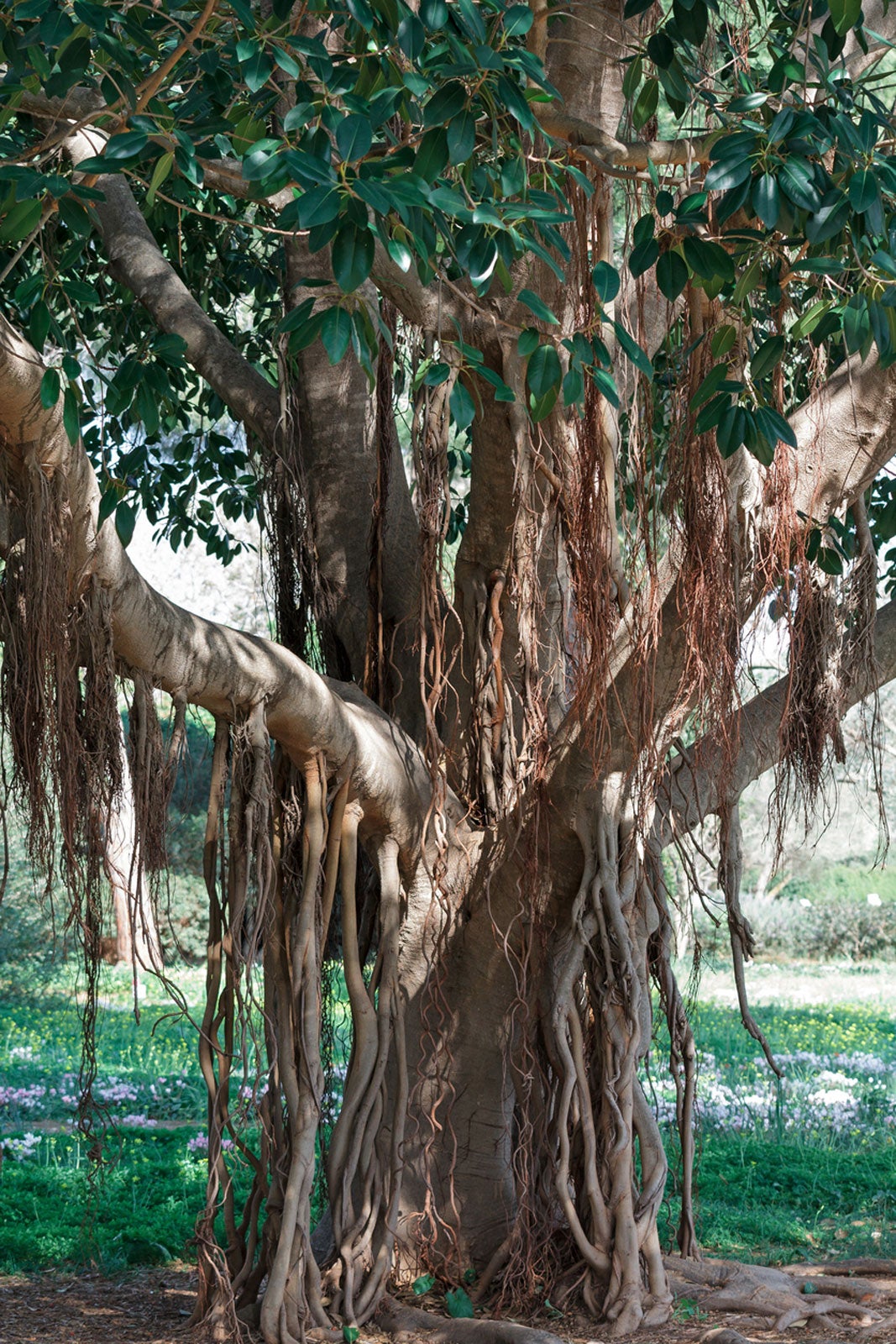Growing a Banyan Tree


A banyan tree makes a great statement, provided that you have enough space in your yard and the appropriate climate. Otherwise, this interesting tree should be grown indoors. Read on to learn more.
Banyan Tree Info
The Banyan (Ficus benghalensis) is a fig tree that begins life as an epiphyte, germinating in the crevices of a host tree or other structure. As it grows, the banyan tree produces aerial roots that hang down and take root wherever they touch the ground. These thick roots actually make the tree appear to have several trunks.
Growing a Banyan Tree Outdoors
On average, these trees have high moisture needs; however, established trees are drought tolerant. They enjoy sun to partial shade as well. Banyan trees are easily damaged by frost and are, therefore, best grown in warmer climates such as those found in USDA plant hardiness zones 10-12. Growing a banyan tree requires a lot of space, as mature trees become quite large. This tree should not be planted near foundations, driveways, streets or even your home, as its canopy alone can spread quite far. In fact, a banyan tree can get up to about 100 feet (30 m.) tall and spread over several acres. The leaves of banyan trees can reach anywhere from 5-10 inches (13-25 cm.) in size. One of the largest banyan trees on record is in Calcutta, India. Its canopy covers over 4.5 acres (18,000 square meters) and stands over 80 feet (24 m.) tall, with more than 2,000 roots.
Banyan Tree Houseplant
Banyan trees are commonly grown as houseplants and are well adapted to indoor environments. Although the banyan tree is better somewhat pot bound, it's a good idea to repot this plant at least every two to three years. The shoot tips can be pinched back to promote branching and help control size. As a houseplant, the banyan tree prefers well-drained but moderately moist soil. The soil should be allowed to dry out between waterings, at which time it needs to be thoroughly saturated. However, caution should be taken to ensure that it doesn't sit in water; otherwise, leaves may yellow and drop. Provide the banyan tree with moderately bright light and maintain indoor temperatures around 70 F. (21 C.) during summer and at least 55-65 F. (10-18 C.) throughout winter.
Propagating Banyan Trees
Banyan trees can be propagated from softwood cuttings or seeds. Cuttings can be taken from the tips and rooted, or by eye cuttings, which require a piece of stem about a half inch below and above a leaf. Insert cuttings into a suitable rooting medium, and within a couple of weeks, roots (or shoots) should begin to develop. As parts of the banyan tree plant are poisonous (if ingested), caution should be used while handling it, as sensitive individuals may be susceptible to skin irritations or allergic reactions. If choosing to grow banyan from seed, allow seedheads to dry on the plant before collecting. Keep in mind, however, that a growing banyan tree from seed can take some time.
Gardening tips, videos, info and more delivered right to your inbox!
Sign up for the Gardening Know How newsletter today and receive a free copy of our e-book "How to Grow Delicious Tomatoes".

Nikki Tilley has been gardening for nearly three decades. The former Senior Editor and Archivist of Gardening Know How, Nikki has also authored six gardening books.
-
 Get Ready For A Summer Of Hummers! Grow These Full Sun Hummingbird Plants and Flowers
Get Ready For A Summer Of Hummers! Grow These Full Sun Hummingbird Plants and FlowersIf you’re lucky enough to enjoy a sunny backyard, make sure you are maxing out on your pollinator opportunities and grow these full sun hummingbird plants and flowers
By Tonya Barnett
-
 12 Lush Alternatives To A Lawn For Sustainable Spaces
12 Lush Alternatives To A Lawn For Sustainable SpacesAlternatives to a lawn are beautiful and also beneficial to your local ecosystem and its pollinators. Explore our top picks for plants to replace grass.
By Tonya Barnett